How to Choose Age-Appropriate Toys for 6-9 Month Babies
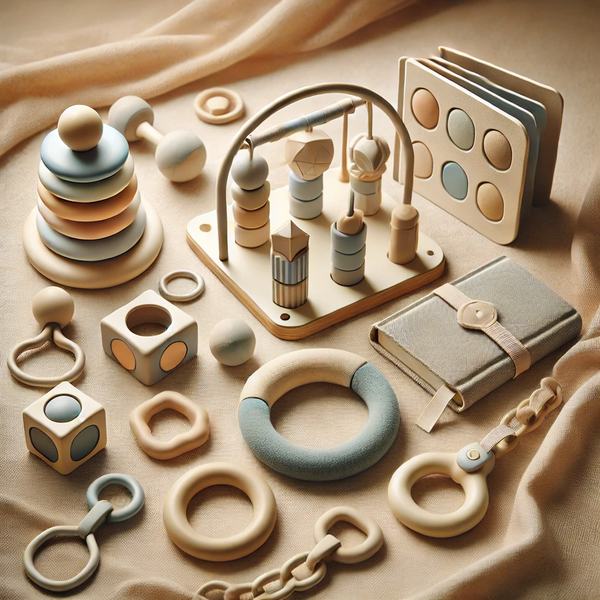
Discover the best toys for babies aged 6-9 months that promote fine motor skills, cognitive development, and problem-solving abilities. Learn more today.
Introduction
Selecting the right toys for your baby can feel overwhelming, but choosing age-appropriate toys is essential for stimulating your child’s development and providing them with the tools they need for growth. As babies develop new skills at each stage, their toys should adapt to meet their changing abilities. This guide breaks down how to pick the best toys for babies aged 6-9 months, and why the right toys matter for their fine motor skills, cognitive abilities, and overall development.
Why Age-Appropriate Toys Matter
Babies develop rapidly during their first year, and toys can play a key role in their development. At six months, babies are beginning to develop fine motor skills such as using their fingers for grasping, holding, and manipulating objects. If you continue to give them oversized toys made for younger babies, they might miss out on crucial opportunities to practice these skills.
Choosing age-appropriate toys helps your baby:
- Improve hand-eye coordination
- Develop fine motor skills and finger dexterity
- Learn cause and effect
- Begin to problem-solve
- Boost cognitive development
Toys for Babies Aged 6-9 Months
From rattles to teething rings, it’s time to trade in those old toys for ones that will help your baby practice new skills. Here’s a list of ideal toys for this age range:
1. Baby Rattles and Maracas
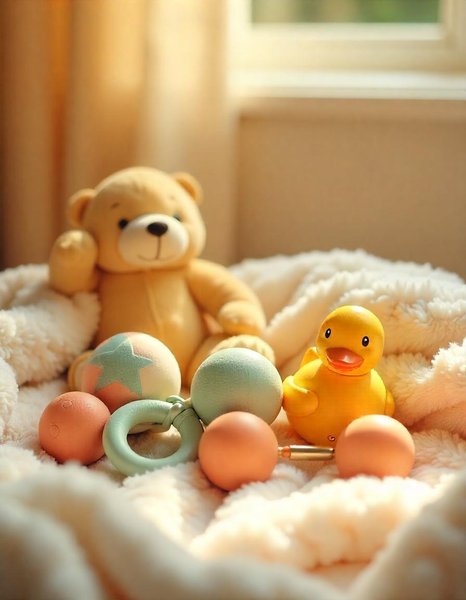
At six months, babies will begin to grasp objects with their fingers instead of their whole hand. Rattles and maracas are excellent tools for encouraging the use of those small hand muscles. Unlike soft rattles with thick handles, these toys are lightweight and easy for babies to hold and manipulate, allowing them to practice fine motor control.
Not only are they fun to shake and bang, but they’re also perfect for babies who are learning to release objects. The simple design encourages babies to hold the rattle with their fingers, stimulating fine motor skill development.
2. Board Books vs. Fabric Books
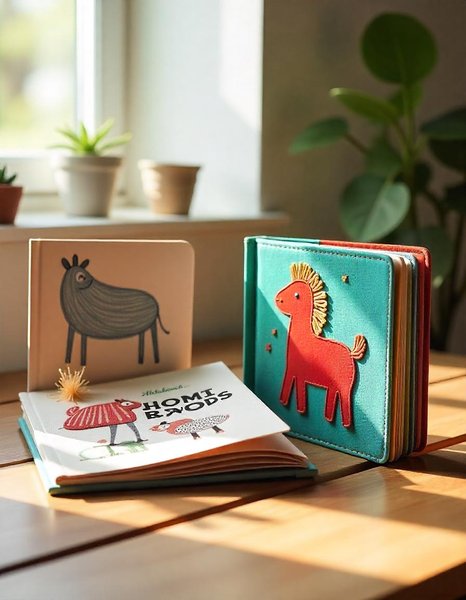
Before six months, babies often engage with fabric books that are soft and chewable. However, as babies grow, board books are a better fit. Board books have sturdy, thick pages that babies can grab and turn, supporting their growing fine motor skills.
The thicker pages allow babies to easily practice turning pages, a skill they’ll need for reading and learning later in life. If your baby is struggling with turning pages, you can use elastic bands to keep pages slightly apart, making it easier for them to grab and turn the pages. Board books also feature interactive elements, such as flaps to lift or textures to feel, which help promote their dexterity and gripping skills.
3. Link Chains from Baby Gym Toys
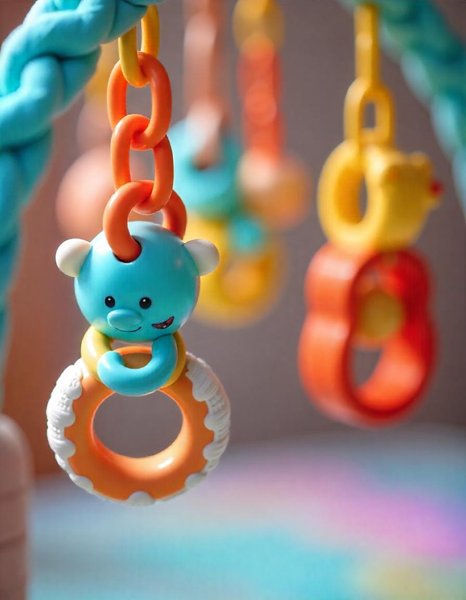
Many baby gyms come with hanging toys, and the links can be used for a different purpose once your baby hits six months. Link chains provide a fun, lightweight toy that babies love to hold, and they also encourage hand-to-hand transfer.
Transferring links from one hand to the other is a skill that helps babies develop finger control and sets them up for future milestones, such as intentional dropping of objects. While your baby won’t be using the link chain for stacking or building just yet, it’s an important tool for developing the dexterity needed for these tasks later on.
4. Shape Sorters
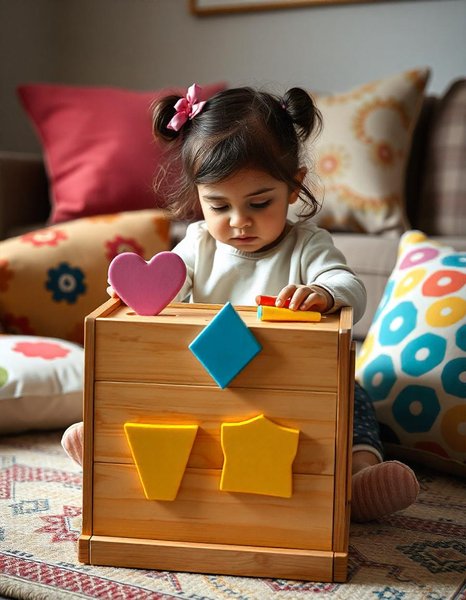
Although babies may not be able to place the shapes into the correct slots until closer to their first birthday, shape sorters are perfect for this age. The shapes aren’t too small, so they’re safe for babies to handle, and they encourage babies to use their fingers and thumbs to grip and manipulate objects.
At this stage, your baby will likely enjoy playing with the shapes independently, whether they are stacking, holding, or dropping them. This encourages the development of finger coordination and motor control, which are key skills for the later stages of development.
5. Ring Stackers
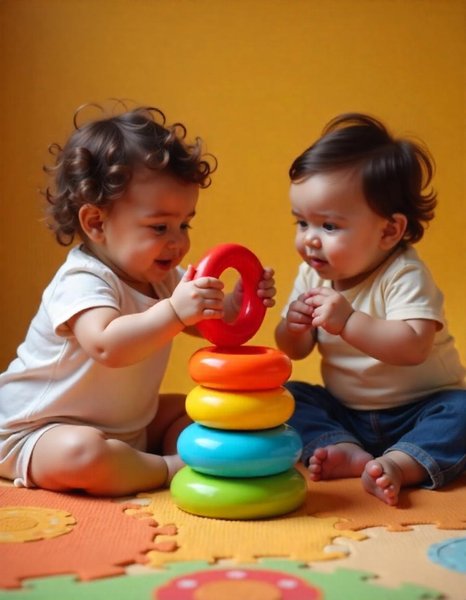
Unlike traditional use of ring stackers, at six months, babies won’t be stacking the rings just yet. Instead, they’ll enjoy removing the rings from the stacker, turning them in their hands, or even banging them together.
This stage is all about exploration. Your baby will develop an understanding of grasping, turning, and manipulating small objects—skills that will eventually help with more complex tasks.
6. Teething Toys
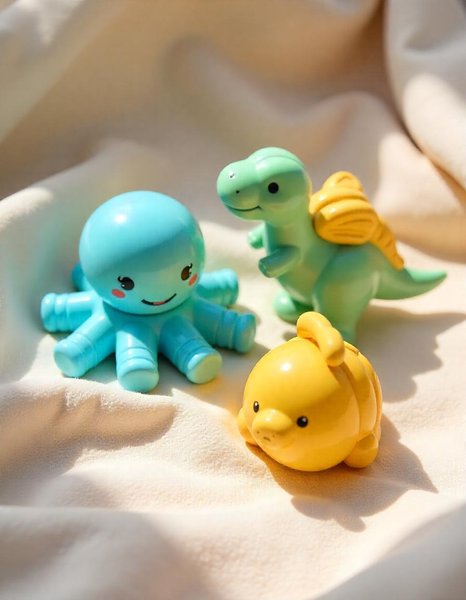
At six months, many babies begin teething, and this phase calls for soothing teething toys. Round or cylindrical teethers are perfect for babies to grip and gnaw on to relieve sore gums.
Sophie the Giraffe is a popular teething toy that’s easy for babies to hold and maneuver. As babies explore these teethers, they practice fine motor control, learning to hold and manipulate objects in different ways. Teething rings made of soft silicone are another great option for providing relief while also helping to strengthen their hand muscles.
7. Cause and Effect Toys
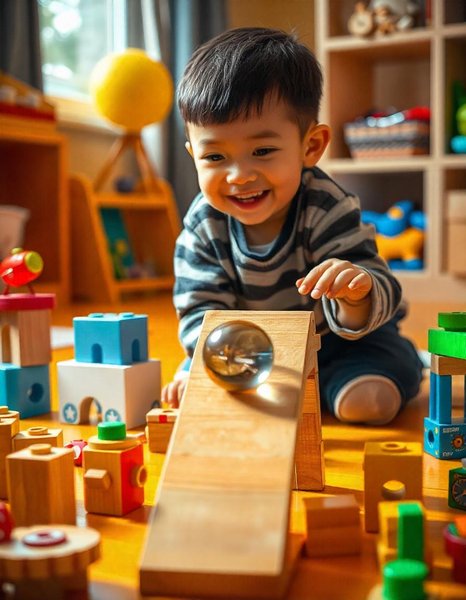
At six months, babies begin to grasp the concept of cause and effect. Musical toys and activity panels are perfect for helping babies explore how their actions lead to reactions. When babies press, poke, or bang on these toys, they see and hear a response—whether it’s a musical sound or an action, such as moving flaps or spinning objects.
These toys encourage babies to practice pressing, poking, and pointing, which helps develop finger isolation, a crucial skill for later tasks.
Toys to Avoid
While many toys are great for development, there are certain toys that could delay gross motor development and even pose safety risks if overused. For example, toys that restrict movement or encourage babies to stay in one position for extended periods can hinder their physical growth and muscle development.
Conclusion
Choosing age-appropriate toys for your baby is one of the best ways to support their development. As babies grow, their ability to manipulate objects improves, and their toys should reflect these changes. Toys like rattles, board books, shape sorters, and teething toys provide essential practice for their growing fine motor skills and cognitive abilities. By introducing these toys at the right time, you help your baby develop the skills they need to thrive.
Spark Early Literacy With a “Grab-and-Go” Puzzle Board
Letter recognition doesn’t have to wait for preschool classrooms—kids can start matching shapes and sounds long before they’re ready to read. One simple option is the Niwlix Wooden Alphabet & Number Puzzle Board, which pairs chunky, toddler-safe pieces with bright illustrations. Children love slotting each letter or digit into its cut-out, and parents love how quickly this quiet activity tidies back up.
Whether you’re working on ABCs, 123s, or just giving little hands something constructive to do during meal prep, this board tucks easily into a tote bag for restaurants, road trips, or doctor-office waits.
👉 See the full details (and today’s price) on Amazon:
Niwlix Alphabet & Number Puzzle Board
FAQs About Choosing Age-Appropriate Toys for Your Baby
- Question:
Why is it important to choose age-appropriate toys for babies? - Answer:
Age-appropriate toys support cognitive, motor, and sensory development while ensuring safety. They provide the right level of stimulation, helping babies learn new skills without overwhelming them. - Question:
What types of toys are best for newborns (0-3 months)? - Answer:
Newborns benefit from high-contrast toys, soft rattles, unbreakable mirrors, and soothing musical toys. These help stimulate visual and auditory senses while encouraging early motor skills. - Question:
What are the best toys for a 3-6 month-old baby? - Answer:
At this stage, babies enjoy grasping toys, soft teething rings, textured balls, and tummy-time mats to promote hand-eye coordination and sensory exploration. - Question:
Which toys help a 6-12 month-old develop motor skills? - Answer:
Toys such as stacking rings, activity cubes, push-and-pull toys, and soft blocks help improve fine and gross motor skills while encouraging problem-solving. - Question:
How can I choose safe toys for my baby? - Answer:
Ensure toys are free from small parts, made of non-toxic materials, have no sharp edges, and meet safety regulations to prevent choking hazards and other risks. - Question:
Are electronic or light-up toys good for babies? - Answer:
While electronic toys can be engaging, traditional hands-on toys like blocks and sensory objects are better for active learning, imagination, and problem-solving rather than passive stimulation. - Question:
How do I know if a toy is educational? - Answer:
Educational toys promote development in areas like language, motor skills, problem-solving, and creativity. Look for toys that encourage active engagement rather than just entertainment. - Question:
How can KidyPulse NutriAI help parents choose the best toys? - Answer:
KidyPulse NutriAI provides personalized recommendations based on your baby’s age and developmental stage, helping parents choose toys that enhance learning and growth.

Comments
No comments yet. Be the first to leave a comment!